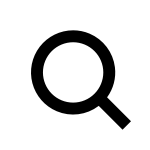Jef Verheyen - Window on Infinity
• 0478 • Urbino – Espace Idéal (Urbino – Ideal Space), 1978
Axel and May Vervoordt FoundationVerheyen is fascinated by the idea of an ideal space, a space with perfect proportions. The Renaissance painting of the ideal city – attributed at the time to Piero della Francesca – was a great source of inspiration for Verheyen. He described it as ‘one of the strongest impressions ever made on me, one of the most important paintings. The Ideal City is built on the principles of the Renaissance perspective. One has to have a very special mind to grasp the structure of this work’. The painting inspires Verheyen’s own visualisation of the Italian city of Urbino as an ideal space. Urbino has been renowned as la città ideale since the Renaissance.
References
Retrospectieve Jef Verheyen, 1932-1984 / Willy Van den Bussche & Léonore Verheyen. - Oostende/Brugge : Provinciaal Museum voor Moderne Kunst/Stichting Kunstboek, 1994. - 158 p. : ill. ; 30 x 24.5 cm
Jef Verheyen 'Lux est Lex' / Freddy De Vree. - Wijnegem : Axel Vervoordt, 2004. - 160 p. : ill. ; 35 x 28 cm
In-Finitum, exh. cat., published by Axel Vervoordt, 2009.

